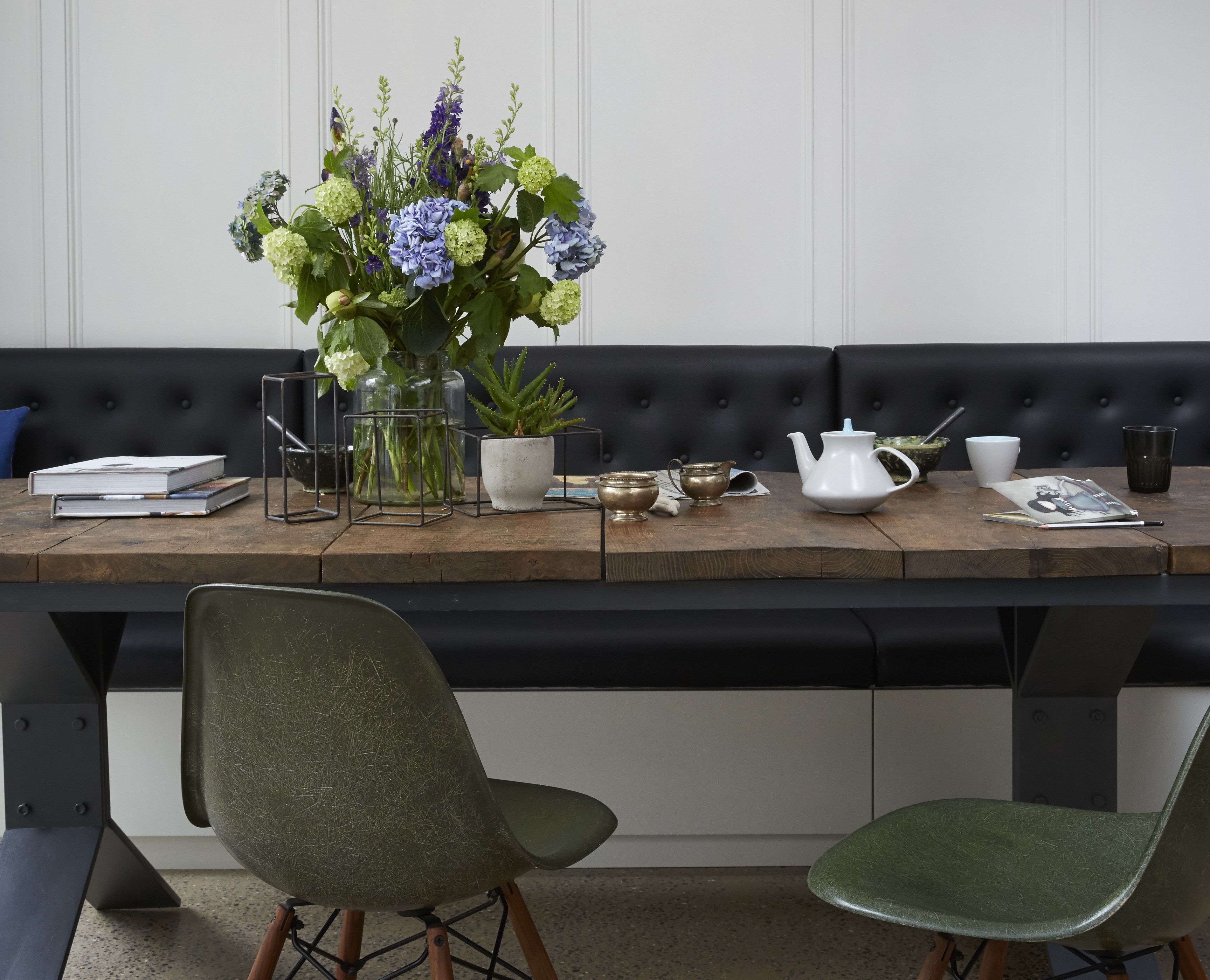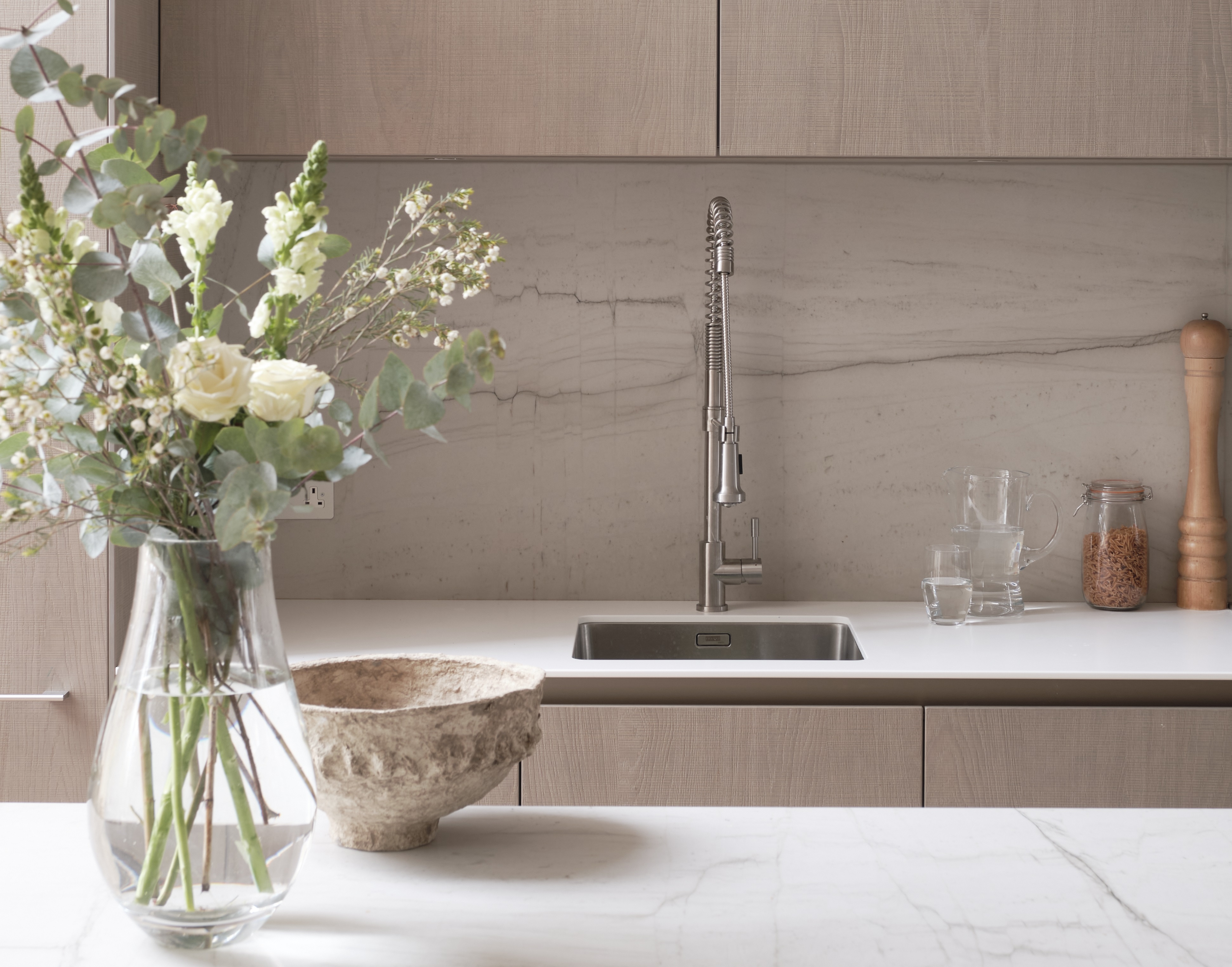
A bright bouquet of blooms can be the perfect finishing touch to complete a room. Whether you prefer the simplicity of roses or a dramatic vase of delphiniums, a pretty display of your favorite flowers will never fail to brighten a space. Contrary to popular belief, you don't need to be a professional florist to arrange the perfect vase of flowers, either - especially if this clever gadget is part of your repertoire.
A beautiful floral display takes a little more effort than simply placing your stems in a vase, but the hardest part is making your blooms look full, buoyant and evenly spaced without any gaps. There are plenty of tricks to arrange flowers like a pro but if you're looking for a fool proof method, this clever gadget, which you can find from Walmart among other places, is the answer. The Japanese tool makes it easy to space your stems and give them the famous florist 'spiral' so they sit neatly within your vase. Here's how to use one for to achieve the most elegant floral display.
Even if you're working with the best flowers for cut floral arrangements, you need a bit of technique to achieve a statement vase of blooms, and that's where this nifty gadget comes in. Known as the Hanataba - which translates to 'bouquet' in Japanese - it's a relatively new concept within the world of floristry.
Invented in 2018 by Swedish innovator Christian Jonasson, it's inspired by a Japanese floral arranging technique where the stems are arranged in a spiral formation for a strong, sturdy, and full display of blooms. Rather than struggle with the technique by hand, however, this device does the hard work for you.
'Basically, it consists of two encased discs of plastic with aligned holes,' explains florist Leigh Chappell. 'When you put the stems through then turn the mechanism, it twists the stems uniformly into an angle of approximately 45 degrees and spirals them, but the stems have to stay inside this kind of armature to keep the spiralled shape. You can then adjust the stem length and put them in a vase.'
Unless you're well-accustomed to arranging flowers, holding all your stems together at the perfect angle can be awkward to say the least. Rather than struggle to neatly position your flowers one at a time, the Hanataba lets you slot your individual stems into the gadget's holes and spiral them evenly in a matter of seconds. It's similar to the flower frog (also known in Japanese as a Kenzan), but for spiraled bouquets rather than straight, upright stems.
Arranging flowers out of a vase is one thing, but keeping their form once you've placed them in water is another. 'Getting the perfect spread of flowers isn't easy when using a vase with a narrower opening — you're working in the dark, trying to navigate other flower and foliage stems while building up your bouquet, as well as contending with the shape of the vase itself,' explains Livingetc's digital editor, Hugh Metcalf. 'With the Hanataba, you can do the bouquet building in a slightly more structured way before adding to the vase, and it definitely keeps your flowers in formation better than other techniques.'

As with most technical art forms, experts have a few caveats when it comes to using a Hanataba. 'Personally, I'd rather spiral stems by hand but if you don't know how to do that then it's a quick fix,' says Leigh. 'You probably need to use a mix of flowers and foliage, but those with fairly sturdy stems as you might damage the more delicate ones in the twisting.'
Leigh also points out that it's best to use a Hanataba inside an opaque vase as opposed to a glass one so that you don't see it. If you do want to use a glass vase, however, you could choose a clear Hanataba like this one from Walmart which won't be as easily visible. As with any floral arrangement be sure to use a a mix of flowers and foliage for the best effect. We love white roses alongside eucalyptus for a delicate display, or laurel among peonies and carnations for a brighter, bolder arrangement.
'If you don't have a tool like this, a simple tie with garden twine could get a similar result, though it'll give you far less control,' adds Hugh. 'While I haven't tried a tool like this one myself, I often use a flower frog in the base of my vases which delivers similar results, making it easier to create structure with a bouquet. However, unlike a flower frog, this idea won't damage the base of your stems. After a few rearrangements on a flower frog, you may find you need to retrim a stem as they can become less poseable as the sharp spikes break apart the bottom of your stems.'
If you want a way to incorporate the latest flower trends in a vase for a beautiful display of blooms, give the Hanataba a try. It's an absolute must-have for flower fans who lack a professional touch, and unlike a flower frog, it keeps your stems happy and healthy.







